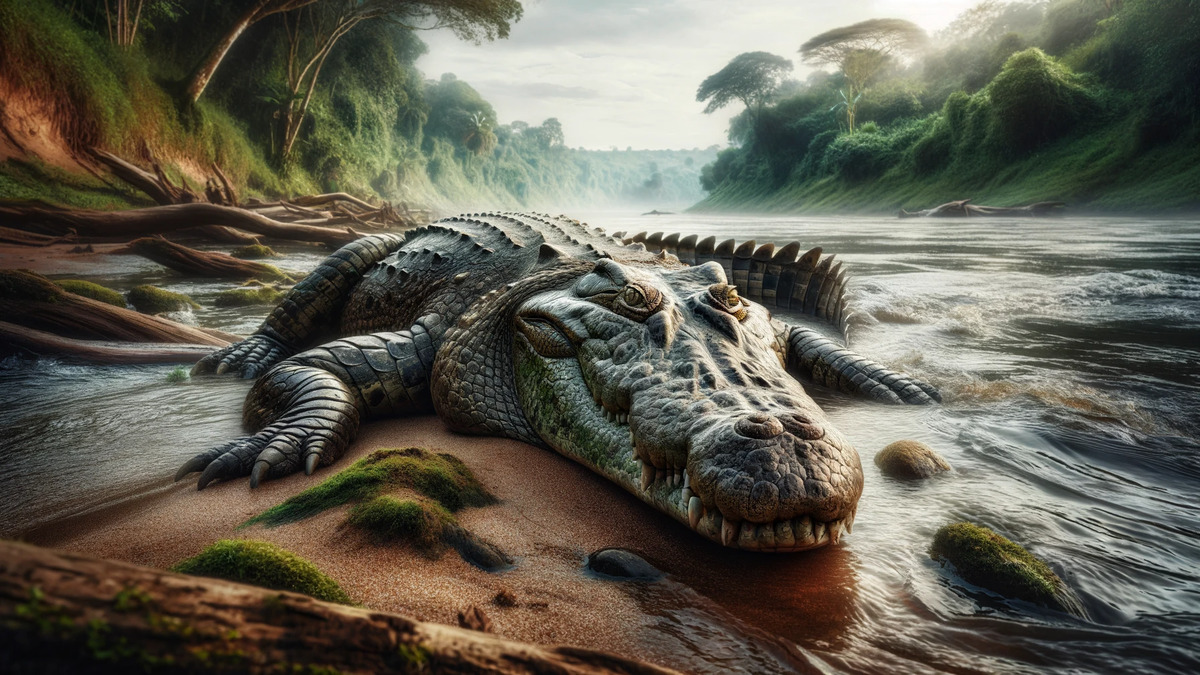Crocodiles belong to the family Crocodylidae in the order Crocodyliformes.
They are the apex predators of ecosystems in the tropics of Africa, Asia, America and Australia, inhabiting a variety of aquatic environments, from freshwater to brackish coastal wetlands and mangrove forests, such as rivers and lakes.
Despite their ferocious image, they contribute to biodiversity by controlling prey populations and play a crucial role in maintaining ecological balance.
The family Crocodylidae includes 14 extant species, ranging from the diminutive African dwarf crocodile, which rarely exceeds 1.8 m in length, to the formidable saltwater crocodile, the largest living reptile, which can exceed 7 m in length. They differ not only in size and habitat preference, but also in morphology, behaviour and diet.
Crocodiles are characterised by a robust, streamlined body with a muscular tail that enables them to navigate quickly through the water; a broad snout with sharp conical teeth cleverly designed to catch and keep prey at bay; robust scales that form defensive armour; and extremely acute senses, especially exceptional vision and keen hearing.
The arrangement of their eyes and nostrils makes them similar to hippopotamuses and other animals, but this is for the same purpose. By exposing only their eyes and nostrils above the water’s surface and remaining underwater, they have established themselves as stealthy ambush predators.
They have a highly developed social structure, including sophisticated communication through visual signals, posture and sound, and an unusual parenting behaviour in which they carefully guard their nests and gently carry their young in their powerful jaws.
In fact, crocodiles cannot chew. They have to tear off chunks of meat and swallow them whole.
Compared to other crocodilian orders, the crocodile has a long, V-shaped snout, in contrast to the U-shaped snout of the alligator and caiman.
Furthermore, crocodiles have functional salt glands, which allow them to inhabit saline environments where alligators do not.
The crocodile’s characteristic ‘toothy smile’, in which the fourth tooth of the lower jaw protrudes from the closed mouth, is also a feature not found in alligators, whose teeth are mostly hidden.
Crocodiles have been closely associated with human history since ancient times, and are both feared and revered, often appearing in myths and folklore.
Ancient lineages dating back to the Cretaceous period, some 83 million years ago, and surprising phylogenetic links with birds as the only extant archaic species have been revealed.
Unlike other reptiles, fascinating aspects can be discovered, such as the unique ‘high-walking’ movement that lifts the body off the ground.
Crocodile teeth are always sharp. This is because they have as many as 80 teeth, which are replaced a whopping 50 times during their lifespan.
Recent observations suggest a certain degree of tool-use behaviour. Crocodiles are known to use sticks as lures to attract birds seeking nesting material.



コメント